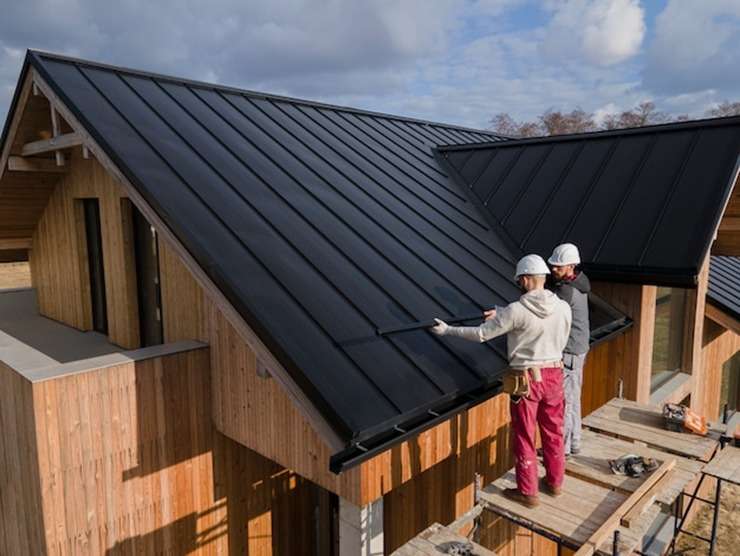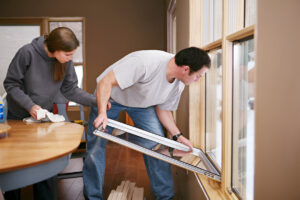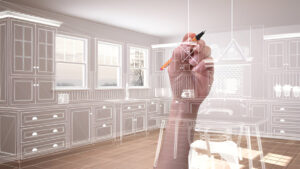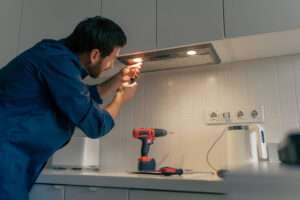Enhance the House Exterior
The choice of siding material is critical in determining a home’s visual appeal, durability, and overall care needs. While vinyl siding has gained popularity due to its low cost and simplicity of installation, the introduction of cement board siding has led homeowners to reconsider their alternatives for long-term exterior solutions.
The need to replace old vinyl siding can be caused by various circumstances, ranging from structural deterioration to changing aesthetic preferences. Vinyl siding may succumb to the wear and strain caused by extreme weather conditions over time, resulting in cracking, warping, or fading, affecting the integrity and beauty of the home’s exterior.
Furthermore, homeowners may choose a more lasting and sturdy option, particularly in areas prone to harsh temperatures, storms, or insect infestations. Aside from practical reasons, changing aesthetic sensitivities may motivate a desire for a more modern or sophisticated appearance that suits the home’s overall design.
The purpose of this article is to extensively discuss the benefits of replacing vinyl siding with a more durable and robust cement board.
Understanding Vinyl Siding
Many homeowners prefer vinyl Siding; however, there are various limitations. Read through the following section to understand why vinyl Siding needs to change.
Pros:
- Vinyl siding is inexpensive compared to other siding materials, making it an appealing alternative for frugal homeowners.
- Vinyl siding is simple to maintain, requiring occasional washing with soap and water. It does not require painting, scraping, or staining, saving homeowners time and money on maintenance.
- Vinyl siding is available in various colors and styles, allowing homeowners to select an option that meets their aesthetic tastes and enhances the overall design of their home.
- Vinyl siding is resistant to moisture, reducing rot and water damage that can occur with traditional siding materials such as wood.
Drawbacks:
- While vinyl siding is sturdy and can survive many climatic conditions, it may not last as long as other siding materials, such as brick or stone. It is prone to cracking, fading, and warping with time, particularly under harsh weather conditions.
- The manufacture and disposal of vinyl siding can have a detrimental influence on the environment. It is not biodegradable and, when burned, can emit hazardous substances that contribute to air pollution. Furthermore, the production process may generate toxic byproducts.
Reasons to change vinyl siding:
- Vinyl siding can be damaged due to hits, extreme weather, or accidents, resulting in cracks, holes, or dents that may compromise its ability to protect the house.
- Exposure to the outdoors over an extended period can cause vinyl siding to fade, distort, or discolor. This might reduce the property’s curb appeal and demand replacement to maintain the home’s visual appeal.
- Homeowners may want to alter the look of their home by choosing a different siding material or a new type and color of siding to improve the overall look and value of the property.
Exploring Cement Board Siding
Cement board siding, a composite material made of cement, sand, and cellulose fibers, has gained popularity in the building industry because of its outstanding durability and weather resistance. Its sturdy composition allows it to survive severe temperatures, high winds, and dampness, ensuring structural integrity even in the toughest conditions.
One of the most noticeable benefits of cement board siding is its exceptional fire resistance, which adds an extra layer of safety and protection to homes, especially in locations prone to wildfires or other fire threats. Furthermore, its resistance to pests such as termites and other wood-destroying insects makes it a viable option for homeowners worried about the structural integrity of their property.
Furthermore, cement board siding has amazing longevity, needing little care and offering long-lasting protection against the weather without regular repairs or replacements. This endurance adds to its long-term cost-effectiveness despite greater initial installation costs than alternative siding materials.
Factors to Consider Before Replacing Vinyl with Cement Board Siding
You can view several critical elements before replacing vinyl siding with cement board siding in a home. This sort of home renovation project is a substantial investment, and it is essential to make an informed decision to ensure the homeowner’s long-term advantages and enjoyment.
- Condition of Vinyl Siding
Determine whether the vinyl siding is damaged, discolored, or no longer serves a protective or aesthetically pleasing purpose. If the vinyl siding is still in good shape, replacing it may be unnecessary since this may be expensive.
- Climate And Environmental Factors
Climate and environmental conditions have an important impact on decision-making. Cement board siding is well-known for its durability and tolerance to adverse weather conditions. Consider the climate in your area and whether cement board siding would be a more suitable and long-lasting alternative than vinyl.
- Maintenance Requirements
Determine the long-term maintenance needs. Vinyl siding is low-maintenance, but cement board siding may require painting or sealing regularly. Consider your desire and capacity to devote time and effort to keeping the new siding since this will affect your pleasure with the decision in the future.

Frequently Asked Questions
Q1. Can cement board siding be put over existing vinyl siding, or must it be removed first?
Installing cement board siding directly on top of vinyl siding is not recommended. Removing the vinyl siding before installing the cement board is normally recommended to guarantee a quality and long-lasting installation.
This removal enables a smoother and more secure cement board installation, minimizes the chance of moisture collecting between the layers, and ensures that any underlying concerns, such as decay or corrosion, are addressed. Removing the vinyl siding also prevents the cement board’s additional weight from pressuring the existing structure.
Q2. Is it possible to tailor or trim cement board siding to fit around architectural elements like windows?
Yes, you can customize cement board siding to fit around architectural details like windows by cutting and molding it to meet various architectural components, allowing you to achieve the desired size and shape.
Conclusion
Ultimately, whether driven by structural concerns, aesthetic preferences, or a need for increased longevity, the switch from vinyl to cement board siding may be a game changer in protecting and beautifying a home’s exterior. It is a decision that should be taken with care, considering the expert recommendation, individual demands, and goals of the homeowner and their property.







